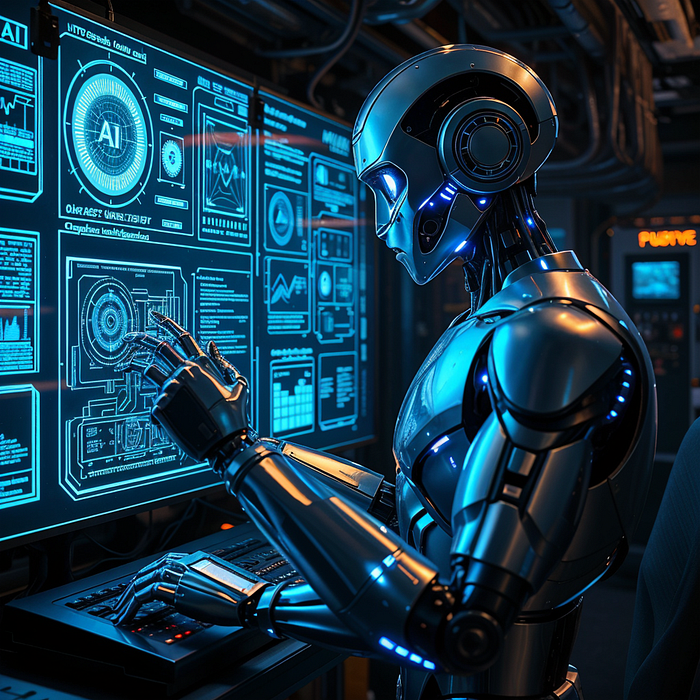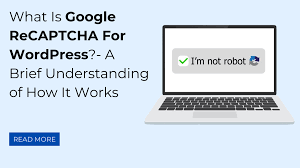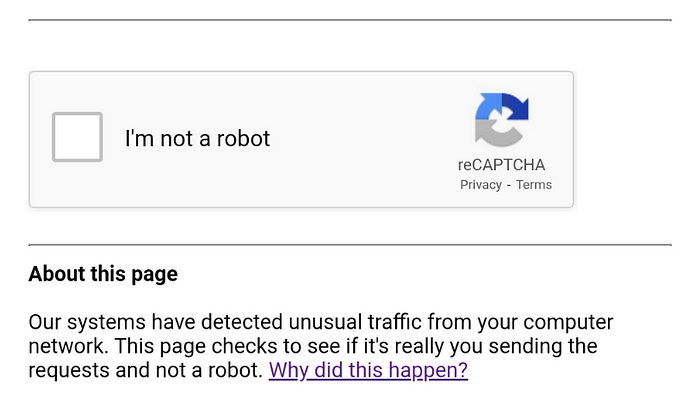The Truth About “I’m Not a Robot”: Interesting Reasons Why Robots Can’t Click On it.
“The ‘I’m Not a Robot’ CAPTCHA might seem like a simple checkbox, but it plays a critical role in website security. Discover the fascinating reasons why robots can’t click it, from tracking human-like behavior to detecting bot patterns. Learn how this clever technology protects websites from spam, fraud, and automated attacks, ensuring a safer online experience.”

1. Understanding CAPTCHAs and How They Work:
CAPTCHA: Completely Automated Public Turing test to tell Computers and Humans Apart. A way to ensure website visitors are human-actual people, not an automated bot-performing some repetitive task to take advantage of a service or scrape data.
Distorted text and image grids in which users have to identify objects are the first things that come to mind when considering CAPTCHAs. However, the “I’m not a robot” check box falls into a newer class of CAPTCHAs that are quite easy on the user, known as re-CAPTCHA. The idea is to make the verification process as smooth as possible for humans while keeping it hard for bot automated programs to get through.

2. The Deceptively Simple “I’m Not a Robot” Checkbox
It is not the checkbox that tells if a human or a bot, but rather an action of clicking it, which initiates some backend process. This then assesses a number of behavioral signals before making a decision on whether you are likely to be a human.
Here’s how this works:
- Mouse movement patterns: In a human movement of the cursor toward a checkbox, there is some sort of imperfection in how that pointer moves. Bots tend to move either in a complete straight line or in an overly precise path. The system monitors these movements.
- Clicking behavior: Human clicking will typically fall at variable speeds depending on the device. Bots pre-set their executions of clicks to be just perfect and uniform.
- Timing: The CAPTCHA system also checks on the time a user uses from landing on the page to clicking the checkbox. Humans take a few moments, while bots usually are much faster.
- Previous Interactions: Google’s reCAPTCHA also keeps track of you over the internet. If you have successfully passed other CAPTCHAs in the past, it remembers and trusts your activity.
3. Why Bots Struggle to Pass the Test

With all the advancements in AI, Robots still don’t have the ability to mimic human behavior to the level that modern CAPTCHAs require. Here’s why:
No Human-Like Movement: Robots are targeted at efficiency and accuracy in their tasks. This, while useful for many things, definitely stands out when asked to perform natural, human-like tasks such as randomly moving a mouse cursor or making imperfect clicks.
Unable to Get Contextual Cues: Robots act by attending to some previously set script or instruction. Hence, it cannot capture such contextual cues as how much time does a user generally take to respond or how he/she interacts with a webpage over time.
Limited Learning Abilities: While advanced AI may learn to impersonate some human actions effectively, it’s just that it’s challenging for bots to reliably outsmart the CAPTCHA systems, which rapidly evolve and improve over time, given that reCAPTCHA is designed to improve itself over time by learning from real human interactions.
4. Role of AI/Automation

While AI is getting increasingly clever, so are the techniques applied by CAPTCHA systems to stay one step ahead. Moreover, machine learning has allowed CAPTCHA systems to analyze more data points and keep bots off when acting like humans.
In fact, CAPTCHA systems are deliberately designed with an understanding that these bots would go on trying to work out a way of outsmarting them. By adapting to the behavior of known bots and humans, they ensure the automated scripts struggle to replicate the required human-like actions. This is pretty much an endless tug-of-war between automation and security that keeps bots from clicking the “I’m not a robot” button with any consistent success.
5. What Happens When a Bot Tries to Click?
This checkbox thus fails a bot trying to interact with it on most of the above-mentioned behavioral tests. In turn, the system would load more complex challenges, like classical grid CAPTCHAs asking users to identify images related to traffic lights, cars, or crosswalks. These puzzles are hard for the bots, since they require contextual comprehension of the visual data-something quite hard for AI.
If the system still has any doubts whether a user is a human, it will ask some other verification questions, such as typing some distorted text or solving intricate puzzles.
Conclusion
That deceptively simple “I’m not a robot” button is so much more than meets the eye. By mingling behavioral analysis with machine learning and contextual data, it can tell humans from bots. It is pretty straightforward for a human to click a box, but that would be highly difficult for a bot due to several hidden obstacles.
As AI continues to improve, so will the CAPTCHA systems to keep online interactions from being inhuman. Next time you are asked to click “I’m not a robot,” remember that with just that simple click, there is much going on at the back.

